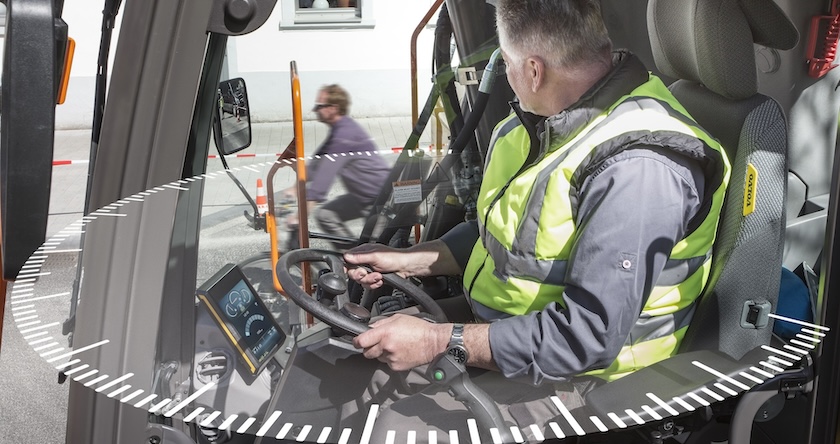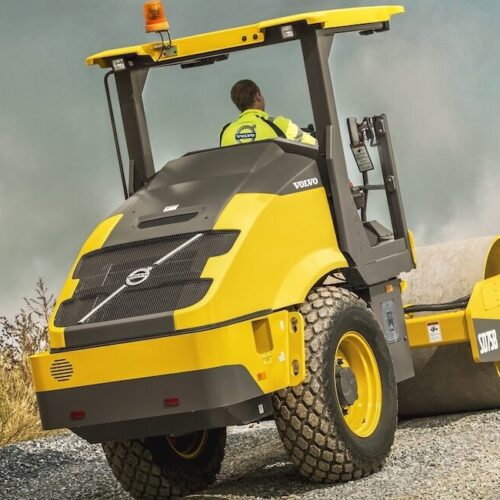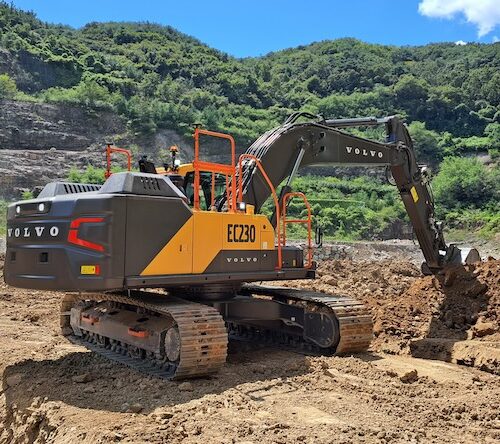4 Technologies Making Construction Sites Safer
This week (May 6-10) is Construction Safety Week, so we thought we’d take a quick look at a few of the current and emerging safety technologies helping workers around the world […]


This week (May 6-10) is Construction Safety Week, so we thought we’d take a quick look at a few of the current and emerging safety technologies helping workers around the world get their jobs done and get home safely at the end of the day.
As we continue to push the boundaries of what’s possible for machine productivity, our approach to safety must also evolve. That’s where cutting-edge technologies come into play, transforming the construction site into a safer, smarter workplace.
Here are just a few of the innovations setting new standards for jobsite safety.
WEARABLES: YOUR PERSONAL SAFETY NET
Imagine a tool that could monitor your heart rate, detect falls or dangerous gasses, or even alert you if you’re entering a hazardous area — all wearable on your head, wrist, feet or simply clipped to your belt.

This isn’t science fiction — it’s the reality of modern wearables in construction. These devices keep a virtual eye on workers, ensuring that any signs of distress or danger are caught early and addressed promptly. By integrating smart wearables into daily operations — like smart hard hats, boots or watches, to name a few — construction sites can significantly reduce accidents and improve response times in emergency situations.
DRONES AS THE EYE IN THE SKY
Drones are no longer just for capturing breathtaking aerial footage — they’ve become vital safety inspectors on construction sites. Flying above the site, drones can identify risks that aren’t visible from the ground, such as unstable structures or unsafe worker practices. They provide a bird’s-eye view, offering insights that lead to safer, more informed decisions on the ground. Plus, drones can conduct these inspections much faster and more frequently than human counterparts, ensuring continuous safety monitoring.

MACHINES WITH A MIND FOR SAFETY
The backbone of any construction site is its machinery, but in addition to the physical safety features that operators rely on every day, what if these powerful tools could also think for themselves? Thanks to advancements in sensor technology and artificial intelligence, they practically can.
A lot of heavy construction equipment these days comes with some sort of telematics software (at Volvo, we even monitor the telematics data for customers) that reports on operator performance, helps prevent machine downtime and so on.

Some brands of heavy construction equipment also come equipped with sensors that alert operators to potential collisions, automatically adjust speed in hazardous conditions, and even halt operations if a safety risk is detected.
For example, on Volvo excavators with Dig Assist, integrated height-alarms help operators avoid obstacles such as electrical lines, and Volvo Smart View gives them a 360-degree bird’s-eye view of their surroundings so they can see and avoid other machines and co-workers while they’re working. This layer of intelligent automation not only enhances safety but also improves the efficiency and precision of construction work.
VIRTUAL REALITY: PRACTICE MAKES PERFECT
Virtual reality (VR) has taken safety training to a whole new level. Instead of learning about safety through videos or manuals, workers can now immerse themselves in realistic simulations of construction environments. They can practice handling hazardous materials, operating machinery and responding to emergencies — all in a risk-free virtual space. VR training is also being developed for service technicians. This hands-on experience not only improves their skills but also prepares them for real-life scenarios, helping make safety second nature.
THE ROAD AHEAD
As we look to the future, the integration of these technologies into construction sites will represent a significant leap forward in safety. By embracing these types of technologies, we’re not just preventing accidents — we’re building a culture of safety that permeates every aspect of the construction industry.
The road ahead is clear — with these cutting-edge technologies, we can continue to raise the bar for safety, ensuring that every construction site is a place where progress and well-being go hand in hand. It’s an exciting time for the industry as we move toward a future where technology and safety converge to protect lives and enhance productivity.
Want some additional ideas on making your workdays safer? Here are five safety tips for heavy equipment on the jobsite.
Categories: Construction Equipment


